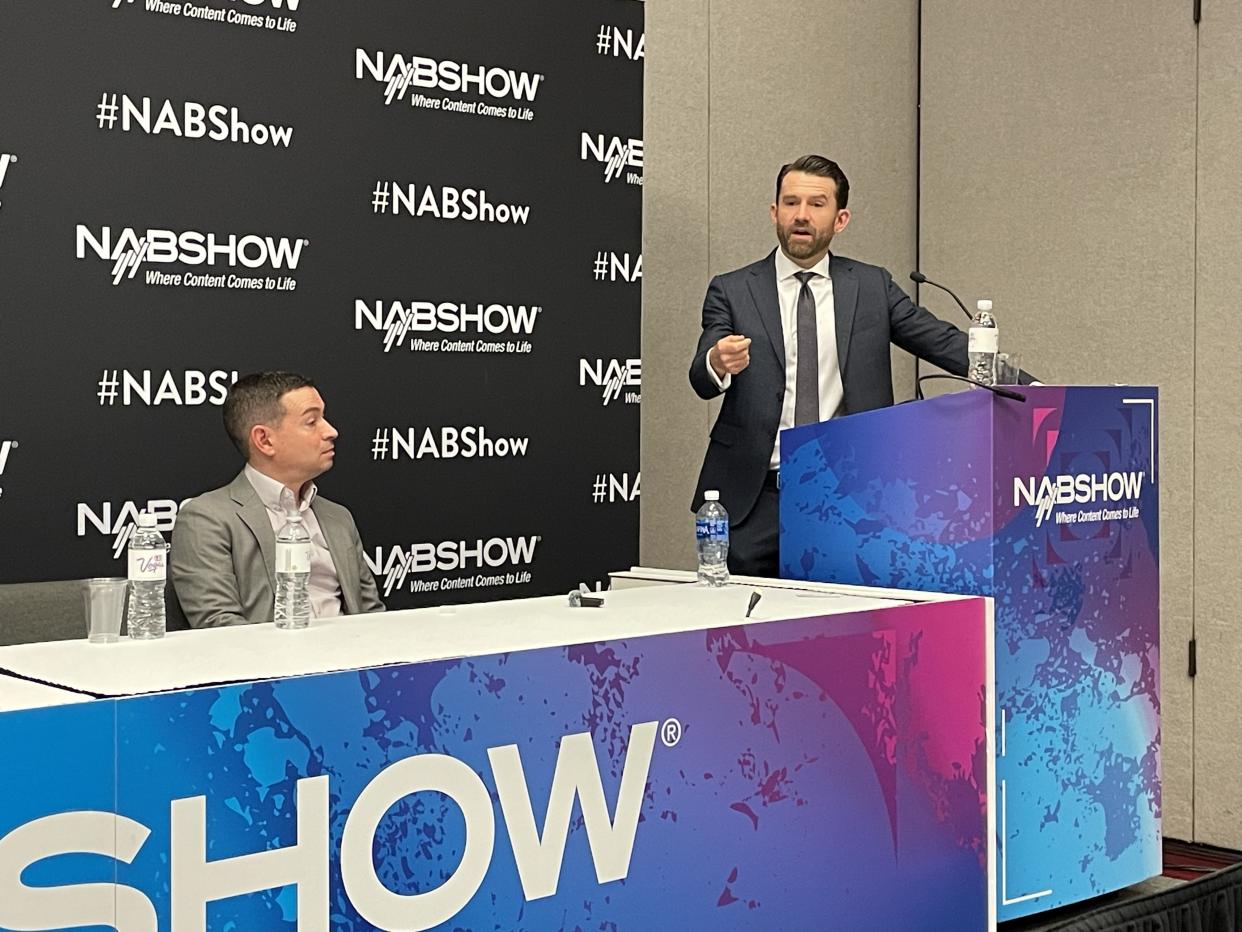Sinclair Launches `Broadspan’ NextGen TV Datacasting Platform

In a notable leap forward for broadcasters planning to monetize their NextGen TV broadcasts, Sinclair has announced the launch of its “Broadspan” datacasting platform.
The platform enables data distribution in all the current markets where Sinclair stations are offering NextGen TV, aka ATSC 3.0, broadcasts.
In making the announcement, Sinclair’s president and CEO Chris Riply said that the platform would be open to all other broadcasters and that they had signed up their first user, Edgio, a leading content delivery network.
During last year’s NAB, Sinclair had promised to build "the NextGen TV infrastructure" that would open up new "datacasting opportunities for broadcasters," Ripley said. “Today, I'm here to tell you what we've done just that."
“This infrastructure will provide the means to intelligently use all available ATSC 3.0 spectrum from multiple stations to deliver the customer's data quickly, efficiency efficiently and securely,” Ripley said.
He stressed capabilities of ATSC 3.0 for efficient data distribution and monetization opportunities and highlighted the infrastructure's ability to allocate spectrum intelligently, deliver data quickly, and provide a cost-effective solution for data recovery.
Ripley and Eric Black, CTO and GM of media at Edgio also emphasized the platform's potential to offload significant video data from the internet, reduce congestion, and enhance the user experience.
Edgio’s CDN works with many companies, including broadcasters, to provide OTT delivery of content.
Black said that the Broadspan platform “takes advantage of the unique capability of ATSC 3.0. to converge broadcast and broadband capability seamlessly. It is a game changer as you will be able to offload significant video data from the internet to reducing congestion and enhancing the user experience while allowing increased bit rates without the loss of any service.”
Black said that “by leveraging ATSC 3.0’s convergence of broadcast and broadband, we are delivering a true 4K experience. Broadspan isn’t just a game changer; it is a paradigm shift in defining immersive entertainment.”
Black also said that the bandwidth provided by NextGen TV broadcasts will dramatically expand the ability of streamers to provide 4K content. “This provides a path to the deliver of 4K content to 100 million, 150 million viewers,” he said.
In announcing the platform launch, Ripley also discussed some of the upcoming developments and opportunities for 3.0 services. He noted that BIA advisors has issued a forecast of $10 billion in potential datacasting ATSC 3.0 revenue for broadcasters and said that the launch of their service “will put the industry on the path to achieving those projections.”
Ripley said that the excess bandwidth available for datacasting on the Sinclair stations is about 9Mbps, which would be sufficient for many services, including the delivery of 4K content by CDNs like Edgio.
However, the capacity is limited by the current system of using a lighthouse station to deliver the 3.0 signals from the local network affiliates, who continue to deliver ATSC signals.
To expand that capacity, Ripley said that broadcasters and the NAB are working with the FCC to come up with a sunset date for ATSC broadcasts.
“One of the main topics in collaborating with the FCC is how do we get out of the lighthouse model when we sunset ATSC 1.0” he said. “As an industry, that is a major objective for just about every broadcaster that I know. It's a major objective for the NAB. It is something that we're going to be pushing forward with the FCC to figure out when that date be and when we can turn off the lighthouses and convert the rest of the stations.”

